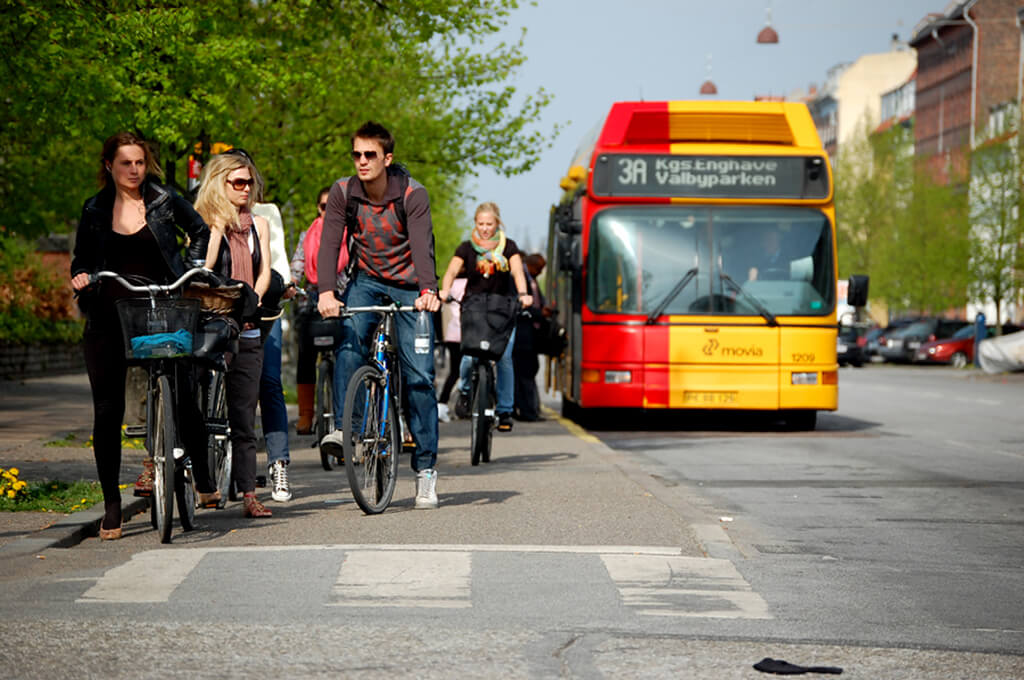Autumn Gear Guide
Find inspiration in our Gear Guide that will keep you out on your bike through wind or rain.
Download NowAarhus, Denmark distributes 200 RFID tags to bicyclists to ensure a relatively unobstructed ride.

Photo by Spacing Magazine
As a part of the EU’s Radical Program, which introduces tech projects into city planning in five “smart cities” across Europe (Santander, Spain; Issy‐les‐Moulineaux, France; Athens, Greece; Genoa, Italy; and Aarhus, Denmark), Aarhus has introduced a pilot program to encourage cycling by reducing the amount of time people on bikes spend at red lights. This innovative new tech, named RFID (radio-frequency identification), functions as wireless sensor technology that triggers traffic lights to switch to green when a bicyclist approaches.
Many places in the world have long had magnetic sensors at intersections to determine when cars approach them and change accordingly. However, the sensors that recognize cars don’t recognize bikes because they are too light to trigger a response. The RFID is a workaround to the weight issue, it’s a small tag that clips onto the bike’s front wheel. So when a rider passes one of the sensors, it triggers a response to change the light to green as long as it’s safe to do so, giving bicycles the priority.
The project was spurred by a response from Aarhus citizens who noted that they hesitated to commute by bike due to the amount of time spent waiting at red lights, and they would be more likely to choose bike riding as a main source of transportation if this weren’t such an issue.
The RFID tags were a relatively simple way to address the traffic flow issue, they don’t even require any charging or input from the rider. The pilot project gave 200 riders the RFID tags to test the response from the city. When the program concluded, it was found that the system worked extremely well, and was well-received by motorists.
While the program has seen success in Denmark, it would be interesting to see if it would be as successful in North America, where preferential treatment for bicyclists is still a topic of contention. But if we’re going to make bicycle commuting as popular here as it is on the other side of the pond, we’re going to have to make some changes to level the playing field between motorists and people on bikes. These RFID tags seem like a great (and easy) place to start.
Find inspiration in our Gear Guide that will keep you out on your bike through wind or rain.
Download Now
Why would people get impatient waiting at a light on bike, but it’s OK in a car? Riding should be about slowing down, thee must be more to life than increasing it’s speed!
I’d be happy to test that out! Nice work, yet again, Denmark! (I’ll see you this summer . . . )
Nice idea; I like your thoughts. However, you have two common misunderstandings regarding current traffic sensors. First, weight is irrelevant — surface area is the critical factor. Second, if the sensors were magnetic, they would trigger only with iron-based metals, which are sparse on modern bikes. In fact, they are inductive — any material which conducts electricity can trigger them, providing enough surface area of the material is close to the sensor. The best way to trigger one is to line up your wheels (aluminum rims, in fact, work very well) along an axis of the sensor. Not all will trigger this way… it depends on the sensitivity setting of the sensor. But most do, I have found.
Comments are closed.